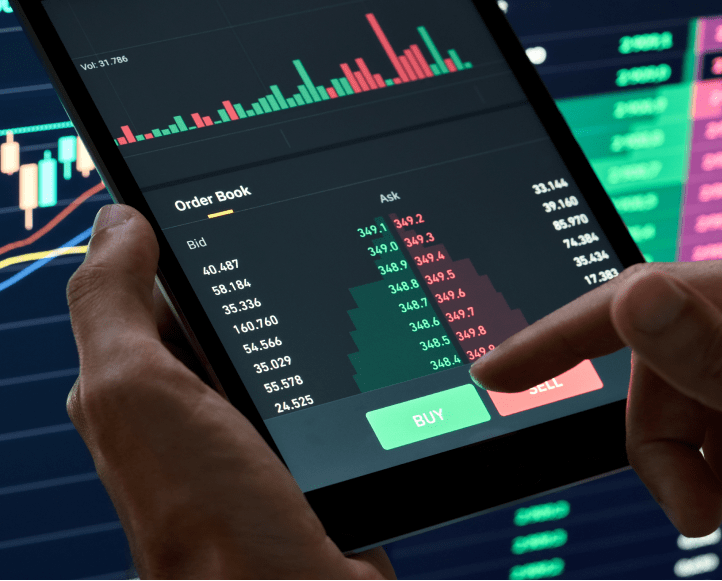
Mastering Crypto Trading Timing: The Key to Successful Investments
The world of cryptocurrency trading is both exhilarating and daunting, with sharp price swings that can make or break a trader’s portfolio. A pivotal factor that often determines a trader’s success isn’t just the assets they choose but their ability to time their trades correctly. In this article, we will examine the critical aspects of Crypto Trading Timing click here, strategies for making informed decisions, and how to navigate the volatility of the crypto market effectively.
Understanding Crypto Market Volatility
Cryptocurrency markets are notorious for their volatility, which can sometimes see assets rise or fall in value by large percentages within a matter of minutes. This volatility presents both risks and opportunities for traders who understand how to navigate it. The crypto market operates 24/7, unlike traditional stock markets, which adds another layer of complexity to timing trades. Thus, having a well-thought-out trading strategy based on timing is crucial for minimizing risks and maximizing profit potential.
Importance of Timing in Trading
Timing in trading can be the difference between a profitable trade and a significant loss. Entry and exit points can significantly affect the performance of your investments. For instance, entering a trade when prices are low and exiting when prices peak is the ideal scenario, but achieving this level of precision is challenging. Successful traders often use various analytical tools and strategies to predict market moves and identify optimal trading moments.
Technical Analysis Tools
Many traders utilize technical analysis to help them make informed decisions regarding timing. Technical analysis involves evaluating price charts, historical data, and market trends to forecast future price movements. Popular tools include:
- Moving Averages: These smooth out price data to identify trends over a specific period. Traders often look for crossovers between short-term and long-term moving averages to signal entry and exit points.
- Relative Strength Index (RSI): This momentum oscillator measures the speed and change of price movements. An RSI of above 70 indicates overbought conditions, while below 30 suggests oversold conditions.
- Fibonacci Retracement: Traders use Fibonacci levels to identify potential reversal levels in the market. By marking key Fibonacci retracement levels on a price chart, traders can pinpoint potential buying and selling opportunities.
Fundamental Analysis and Market Sentiment
While technical analysis focuses on price data, fundamental analysis looks at economic factors influencing an asset’s value. For the cryptocurrency market, this could include news about regulatory changes, technological advancements, or macroeconomic trends. Understanding market sentiment can also provide insights into when to buy or sell. Sentiment indicators measure the emotions of the market—like fear or greed—which often influence price movement. Additionally, keeping an eye on social media and crypto forums can provide insights into prevailing market vibes.

Utilizing Market Patterns
Beyond technical and fundamental analysis, recognizing specific market patterns can aid in timing decisions. Patterns like head and shoulders, double tops, and flags provide visual cues about potential price movements. Moreover, understanding cycles—such as boom and bust patterns—can offer insights into long-term timing strategies. For skilled traders, discerning these patterns can lead to well-timed entries and exits.
Automated Trading Bots
The rise of technology has led to the development of automated trading bots that execute trades based on predetermined criteria. These bots can analyze market conditions and execute trades at lightning speed, often taking advantage of fleeting opportunities that human traders may miss. While they can optimize entry and exit points based on the settings programmed into them, it’s crucial to monitor their performance and adjust their parameters as needed to adapt to changing market conditions.
The Role of News and Events
In the world of cryptocurrency, news plays a pivotal role in market movements. Events such as hard forks, significant partnerships, or regulatory announcements can dramatically affect prices and should be closely monitored. Traders often use a calendar of upcoming events to anticipate potential volatility. It’s vital to strategize how different types of news will impact asset prices and time trades accordingly.
Strategies for Trading Timing
Here are some strategies traders can employ to enhance their timing in crypto trading:
- Set Clear Goals: Whether aiming for short-term profits or long-term investments, having clear financial goals will shape your trading strategy and help with timing decisions.
- Practice Patience: Waiting for the right moment can prevent you from making impulsive decisions that lead to losses. Sticking to your analysis and strategy is key.
- Diversify Your Portfolio: By diversifying investments, traders can mitigate risks associated with timing. A mix of assets may help balance out risks during volatile moments.
- Flexible Adjustments: Markets can shift rapidly, so being flexible and willing to adjust your strategy based on real-time data is essential.
Conclusion
In conclusion, mastering crypto trading timing is essential for any trader looking to thrive in the volatile world of cryptocurrency. By leveraging technical and fundamental analysis, recognizing market patterns, utilizing technology, and staying informed on news and events, traders can significantly enhance their likelihood of making profitable trades. Remember that every trader’s journey is unique, and developing a timing strategy that works for you requires practice, patience, and perseverance. Stay informed, remain disciplined, and adapt to the ever-changing landscape to navigate the complexities of crypto trading successfully.